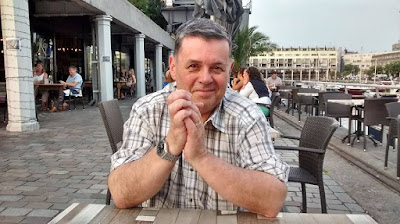Refugees reshape Jordan’s urban landscape — report
The rise in the number of refugees is most felt in urban areas and primary cities like Amman (Photo by Camille Dupire)
AMMAN — Amman hosts 32 per cent of the 1.4
million refugees currently living in Jordan, a recent report by the
World Bank and Feinstein International Centre, that looked into the
impact of urban displacement in the MENA cities, found.
With
the multiplication of regional crises and waves of unrest, the issue of
forcibly displaced people relocation has become one of the most
pressing challenges in the region, according to the report titled
“Cities of Refuge in the Middle East”, which stressed that most of these
people live outside of camps.
In
Jordan, 80 per cent of the Syrian refugees live in host communities
across the Kingdom, mostly concentrated in urban areas, according to
official figures. This is due to a perception that cities offer better
economic opportunities, increased security, a degree of anonymity,
greater access to services, and proximity to markets, the report stated.
The
urbanisation of forced displacement means the displaced are no longer
in isolated areas, but now blend into existing urban populations,
creating a number of social, cultural, economic and human challenges.
"It
used to be easy to find a good place to live for a decent price. Now,
the rents have gone crazy and we are forced to lower our standards,"
said Anna Khoury, a 48-year-old resident of Shmeisani, who cited
immigration as "the main reason" for this hike.
Based
on global trends, forced displacement in MENA is projected to be
protracted and long lasting; more than 80 per cent of refugee crises
last for 10 years or more, and two out of five last 20 years or more,
the report showed, calling for the implementation of sustainable
strategies to address the issue.
“The
shift in displacement from camps to towns and cities means changing the
paradigm for how humanitarian and development agencies work with
displaced populations,” the report stated, adding “instead of providing
stand-alone solutions to displaced people in camps or rural areas, the
challenge is to support host communities to scale up existing services,
shelter and jobs to meet the needs of both the original residents and
the displaced”.
A recent study
by the Centre for Strategic Studies at the University of Jordan showed
that Jordanians have had a lower sense of security than Syrians since
the onset of the refugee crisis, with 49 per cent of Jordanians
believing that the existence of refugees outside the camps “highly
threatens the security and stability of Jordan”.
“I
do not feel safe walking at night anymore. I used to send my children
for grocery shopping in the evenings but now, with the new settlements
around the area, I do not let them go alone anymore,” said Leila Abu
Jaber, a mother of three living in the eastern part of Amman.
“Local
governments need to leverage the delivery of services in urban areas to
increase confidence and build trust within the communities as a basis
for social cohesion,” the report said, noting that approaches that
target assistance only for the displaced tend to heighten social
tensions between the displaced and host communities.
However,
some consider the blame on Syrians as exaggerated. Myriam Saleh, who
recently took her 3-year-old daughter to the doctor for a fever due to a
“bacterial infection”, recalled: “The paediatrician instantly blamed
the refugees, saying that Jordan was hosting too many and that they
bring all kinds of illnesses with them”.
Another
issue raised by the report pertained to the varied impact of urban
displacement between primary and secondary cities, as well as within
cities.
Capital
cities and major urban agglomerations like Amman tend to have the
highest numbers of forcibly displaced people, whereas secondary cities
near the borders have extremely high proportions of refugees compared to
their initial population and are therefore often more affected, the
report showed.
More: http://www.jordantimes.com/news/local/refugees-reshape-jordan%E2%80%99s-urban-landscape-%E2%80%94-report
Interessant artikel? Deel het eens met uw netwerk en help mee met het verspreiden van de bekendheid van dit blog. Er staan wellicht nog meer artikelen op dit weblog die u zullen boeien. Kijk gerust eens rond. Zelf graag wat willen plaatsen? Mail dan webmaster@vreemdelingenrecht.com In verband met geldwolven die denken geld te kunnen claimen op krantenartikelen die op een blog als deze worden geplaatst maar na meestal een dag voor de krantenlezers aan leeswaardigheid hebben ingeboet terwijl wij vreemdelingenrecht specialisten ze soms wel nog jaren gebruiken om er een kopie van te maken voor een zaak ga ik over tot het plaatsen van alleen het eerste stukje. Ja ik weet het: de kans dat u doorklikt is geringer dan wanneer het hele artikel hier staat en een kopie van het orgineel maken handig kan zijn voor uw zaak. Wilt u zelf wat overnemen van dit weblog. Dat mag. Zet er alleen even een link bij naar het desbetreffende artikel zodat mensen niet alleen dat wat u knipt en plakt kunnen lezen maar dat ook kunnen doen in de context. Subscribe to Vreemdelingenrecht.com blog by Email


Reacties